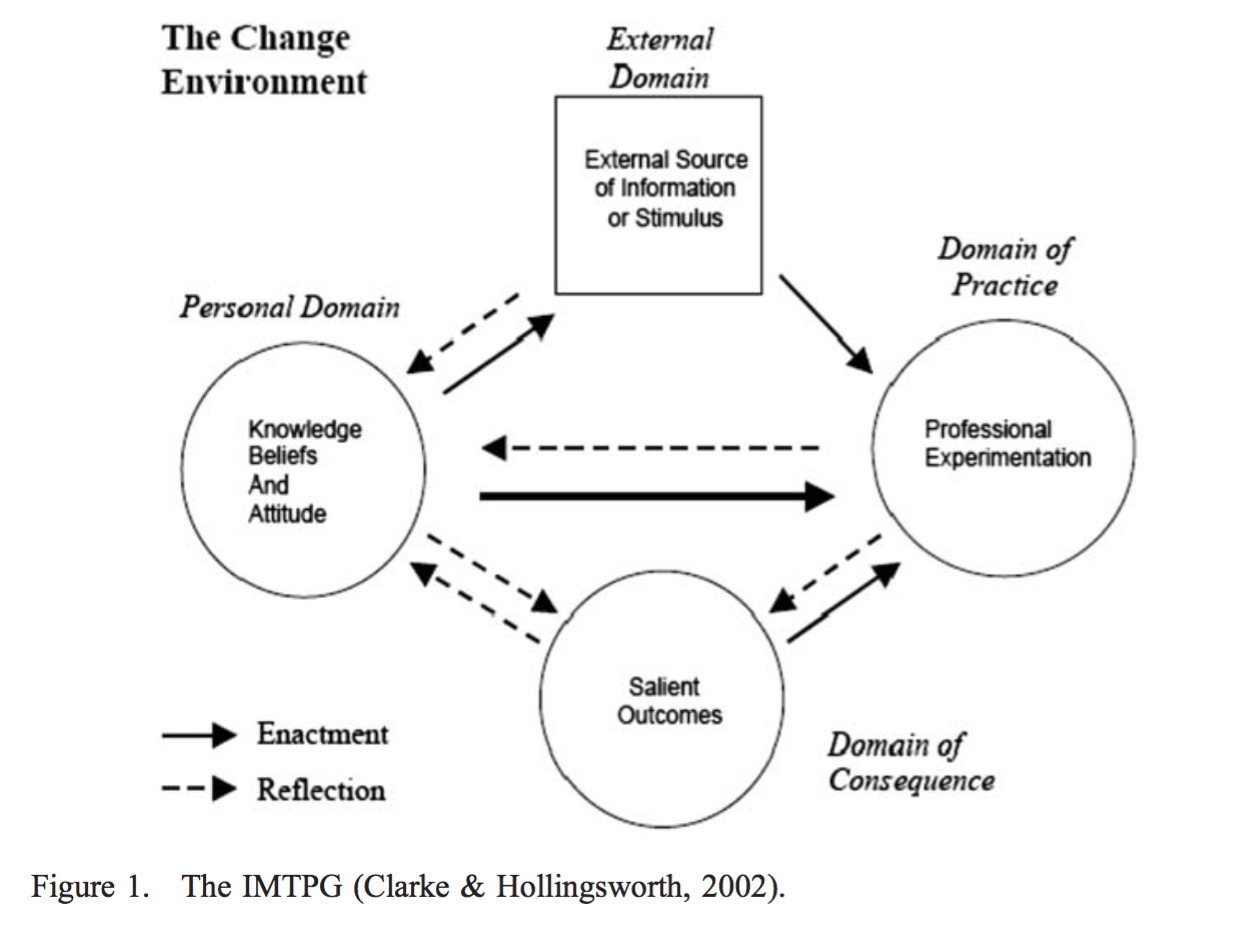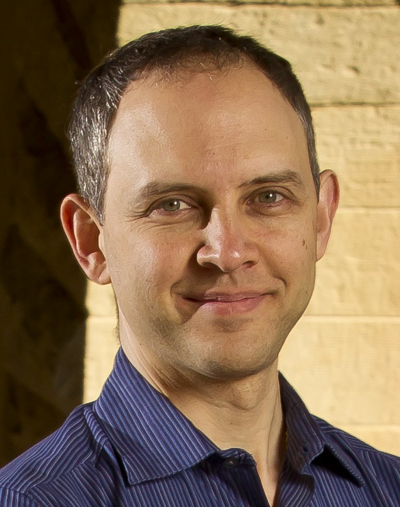“What do you think are the most important goals of PD? Why are those goals so important?”
The most important goal of PD is to teach teachers how to think. Think about their teaching, how students learn, what context learning is happening in, and what content is being delivered. As defined by Thompson & Zeuli (1999), thinking relates to “using information and experience” (p.346) to “solve problems, resolve dissonances between the way they initially understand a phenomenon and new evidence that challenges that understanding” (p.346). In the same way that reformers desire to instill thinking about learning in students, PD must do the same for teachers. “But thinking to learn is different from learning to think, and it is thinking to learn we see as central to reformed practice in science and mathematics” (Thompson & Zeuli, 1999, p.350). Effective PD must create a cultural change in the profession.
Thinking about how they teach involves provoking a deep change in how teachers believe their in and out of class activities should look like. “This kind of teaching and learning would require that teachers become serious learners in and around their practice, rather than amassing strategies and activities.” (Ball, D., & Cohen, D., 1999, p.4). As exemplified by Cohen with Mrs. Oublier’s case, more often than not, teachers will pick and choose small parts of what they learn in PD and adapt them to their traditional teaching style instead of rethinking the style itself. Yet habits die hard, thereby the need to have prolonged and sustained PD throughout the year in order to be constantly observing, learning and adjusting one’s teaching. “Professional development could be substantially improved if we could develop ways to learn and teach about practice in practice” (Ball, D., & Cohen, D., 1999, p.12).
How students learn is another facet of what PD must teach teachers to think about. Many teachers might still have the mind set of “teaching as telling and learning as remembering” (Thompson & Zeuli, 1999, p.349). This is an outdated vision that has been widely disproven by research.
“Students do not get knowledge from teachers, or books, or experience with hands-on materials. They make it by thinking, using information and experience. No thinking, no learning – at least, no conceptual learning of the kind reformers envision.”, (Thompson, C. L., & Zeuli, J. S. 1999, p.346)
The challenge here is how to teach this through PD, making teachers think about their students in a ‘novel’ way.
“The key questions for reform, then, are whether teachers understand that students must think in order to learn and whether they know how to provoke, stimulate, and support students’ thinking.” (Thompson, C. L., & Zeuli, J. S. 1999, p.349)
Not only must teachers must drive student’s thinking, they must constantly observe the progression of the classroom and adapt in real time. They must think on their feet to find better analogies, explanations or activities that support the student in learning. Therefore PD must also teach formative assessment strategies and metacognitive skills to constantly analyze their practice. This includes recording their own teaching, observe others teaching, look closely at student’s work and what responses they give in class. “Teachers would need to learn how to use what they learn about student’ work and ideas to inform and improve teaching”, (Ball, D., & Cohen, D., 1999, p.11)
PD must also have the goal of contextualizing the curriculum and program to the specific scenario it is inserted in. Ideally we would want a generic format for PD, which is foreseeably possible when talking about pedagogy, classroom management and other non-content specific items.
“In other words, the professional development efforts in every one of these investigations centered directly on enhancing teachers’ content knowledge and their pedagogic content knowledge (Shulman 1986). The activities were designed to help teachers better understand both what they teach and how students acquire specific content knowledge and skill.”, Guskey, T. R., & Yoon, K. S., 2009, p.497)
Yet research also shows that PD must be tailored for the specific content to the teacher’s area and be aligned with the teacher’s reality. Specific content aids teachers transfer the knowledge being presented during the sessions into their practice.
“This corroborates the position taken by the National Staff Development Council (2001), which argues that the most effective professional development comes not from the implementation of a particular set of “best practices,” but from the careful adaptation of varied practices to specific content, process, and context elements.”, (Guskey, T. R., & Yoon, K. S., 2009, p.497)
Not only the content must be tailored to the subject matter, but the context must be taken into consideration. Social, economic, and cultural factors certainly influence teachers’ perceptions of what teaching looks like and what is required to be able to connect and engage with students.
Another major goal of PD must be to offer continued and prolonged support for teachers. Research shows that communities of practice help teachers feed off of each other, learn from each other and support each other in further developing their skills.
“Continuing thoughtful discussion among learners and teachers is an essential element of any serious education, because it is the chief vehicle for analyst, criticism, and communication of idea, practices, and values.” (Ball, D., & Cohen, D., 1999, p.13)
These communities though, must be accompanied by the PD program to ensure that the interactions are fruitful and do not fall back into the status-quo and become a forum for lamenting the ails of the job.
“Guberman (1995) has noted how easily collegially oriented efforts can create a ‘discussion culture’ unhinged from actual changes in classroom practice. ‘Inquiry groups’ in name can turn out to be emotional support groups in practice, valuable to the morale and mental health of participants but unlikely to effect real changes in their beliefs or knowledge.” (Thompson & Zeuli, 1999, p.353)
In part I believe, this is a reason why PD programs must offer continuous support for the teachers – to disentangle old notions and aid teachers in transforming their current practice.
In conclusion, I see the challenges of PD as not very different from the challenges in education. Once it is acknowledged that teachers are students with respect to the research available in PCK, cognition, and relevant content; PD might be transformed and become more effective as well. Therefore, the main goal of PD is the same as the goals for education: student achievement gains – one of the most complex problems humanity faces nowadays, in my opinion – and the reason why PD is so important and should be given attention as the main carrier of transformation.
“Ironically, while the role of the teacher educator is critical to any effort to change the landscape of professional development, it is a role for which few people have any preparation and in which there are few opportunities for continued learning: the is little professional development for professional developers.” (Ball, D., & Cohen, D., 1999, p. 28)
References
Ball, D., & Cohen, D. (1999). Toward a practice-based theory of professional education. Teaching as the Learning Profession San Francisco: Jossey-Bass.
Guskey, T. R., & Yoon, K. S. (2009). What works in professional development. Phi delta kappan,90(7), 495-500.
Thompson, C. L., & Zeuli, J. S. (1999). The frame and the tapestry: Standards-based reform and professional development. Teaching as the learning profession: Handbook of policy and practice, 341-375.
van Driel, J. H., Meirink, J. A., Van Veen, K., & Zwart, R. C. (2012). Current trends and missing links in studies on teacher professional development in science education: a review of design features and quality of research. Studies in science education, 48(2), 129-160.






